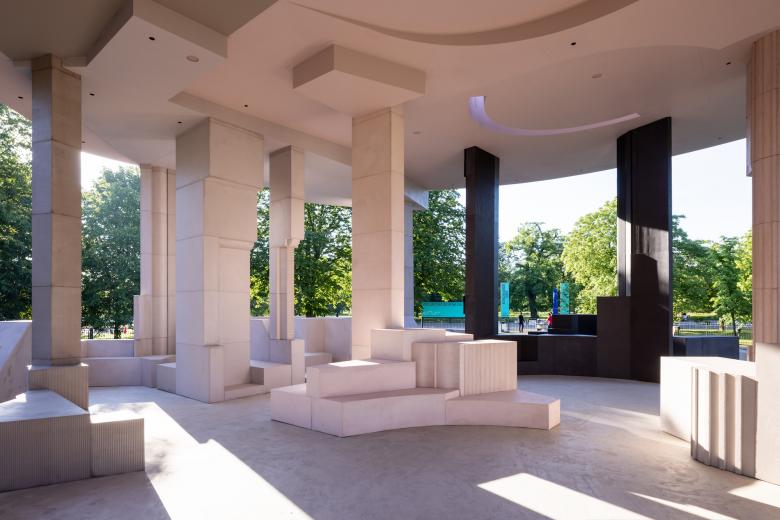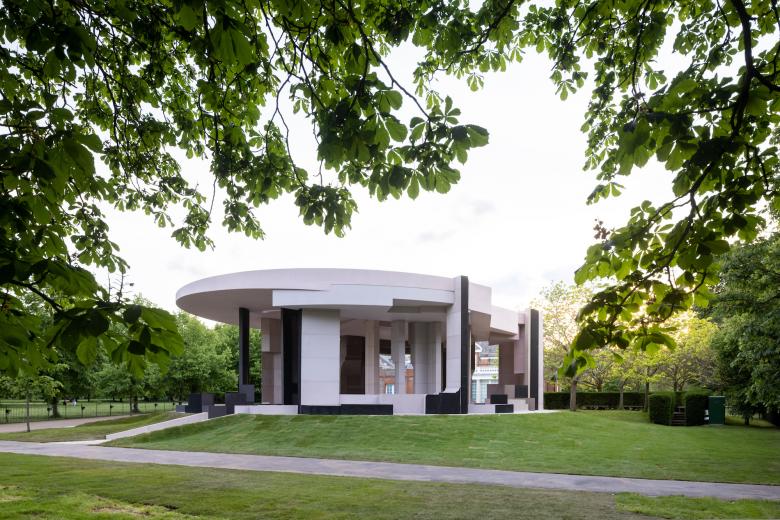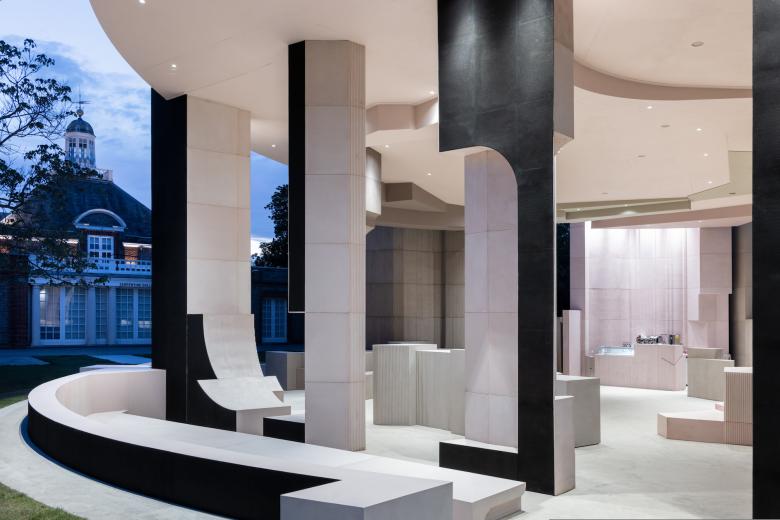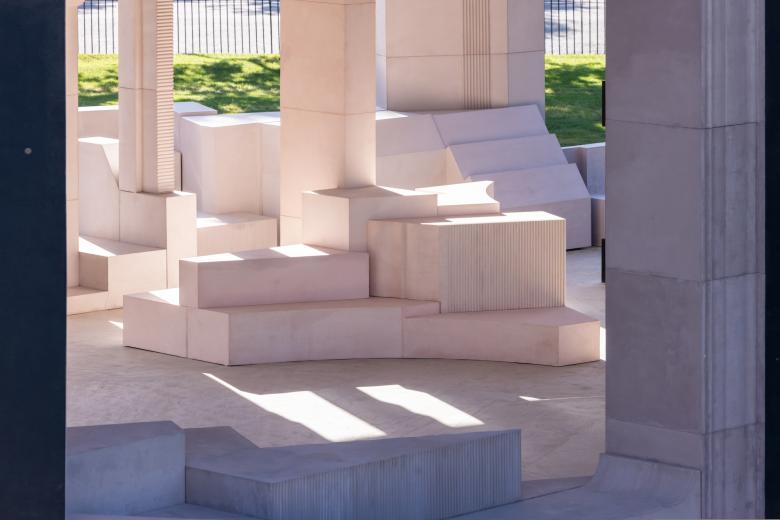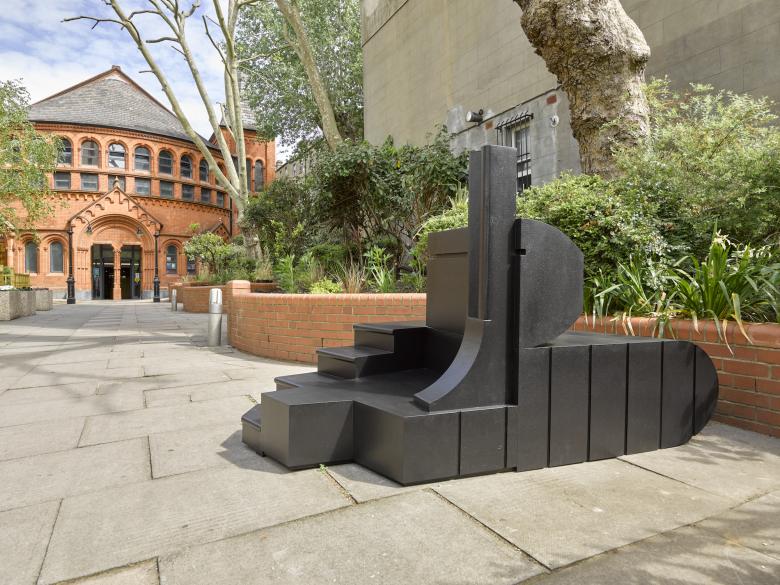The Shapes of London
The 20th Serpentine Pavilion opens to the public in London's Kensington Gardens on June 11, 2021, following a one-year pandemic-induced delay. The pavilion that references the shapes of London buildings is designed by Johannesburg's Counterspace, which is led by Sumayya Vally, the youngest architect to be commissioned for the Serpentine Galleries' annual project.
Vally turned thirty last year, when the design by Counterspace was unveiled and when the pavilion should have been installed. When the decision was made last April to wait a year to install the pavilion, trustee and advisor David Adjaye said: "Rather than rush to execute Counterspace's stellar design as soon as it is safe to do so, the Serpentine has chosen to accept the slowness reshaping society today and utilize it to develop a deeper relationship with the architects ... [and] to draw more meaningful connections between their pavilion and the people, communities, and nature of London." Regardless of the delay, the form of the pavilion, as seen in photographs by Iwan Baan, closely follows the renderings that were first unveiled in February 2020.
According to a statement from Vally, the design of the pavilion "is based on past and present places of meeting, organizing and belonging in London. The shapes and forms in the pavilion are a result of abstracting, adding, superimposing and splicing architectural elements, varying in scales of intimacy, from various locations." Structured in repurposed steel, timber pallets, and plywood sheeting, the elements are clad in cork and micro-cement, finished in contrasting colors and in different textures.
The pavilion creates gathering spaces that were inspired by spaces in London: "places of community and cultural production that are particularly relevant to migrant communities across the city, including places of worship, markets, restaurants, bookshops and local cultural institutions." Some of these urban spaces have been lost due to construction in such London neighborhoods as Peckham and Notting Hill, so Vally's pavilion serves to tell the stories of lost spaces while also emphasizing architecture's "role in preserving and evolving the culture of a place and the connections people have to it."
The ambitious concept focused on the social lives of migrant communities risks being lost in an architectural design that collages architectural elements in a manner that is wide open to numerous interpretations — or none at all. Strengthening the concept are the extension of pavilion fragments into four relevant London neighborhoods, including Notting Hill (below), the addition of a special sound program, called Listening to the City, that further links the migrant neighborhoods to Kensington Gardens, and a program of grants and fellowships supporting artists working in those same communities. Press materials include a map and list, with addresses, of the many places that directly inspired the pavilion; hopefully visitors to the pavilion have access to the same materials, in order to clearly see the links between an architectural installation and the community spaces it references.
